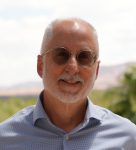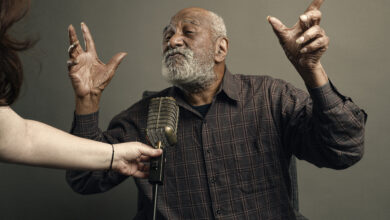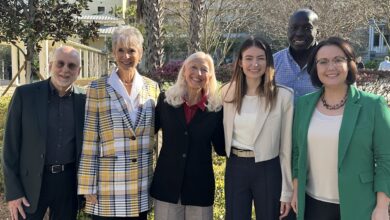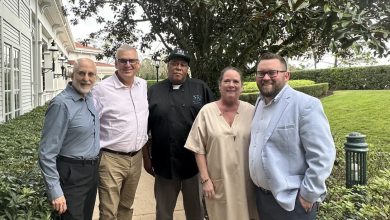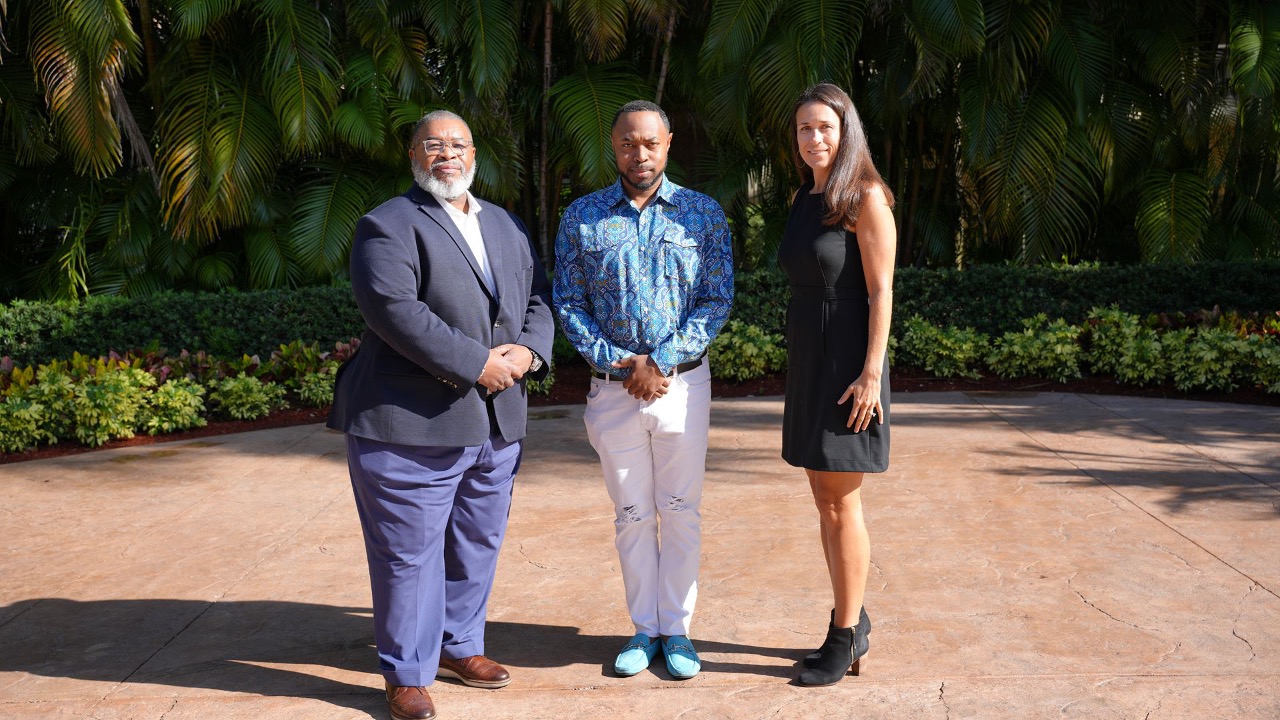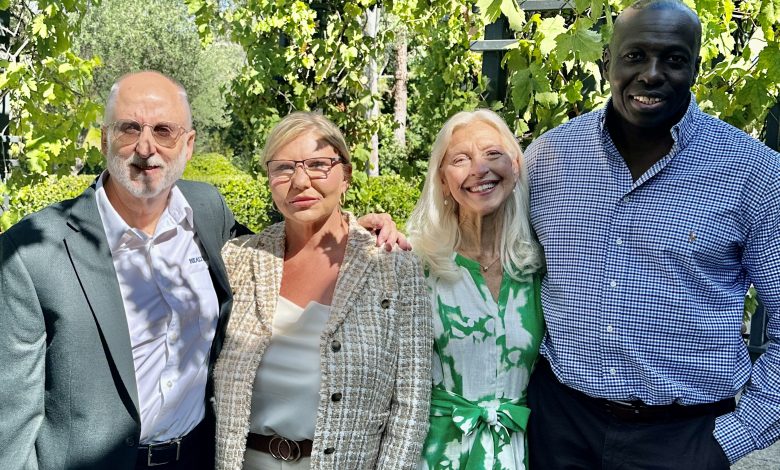
HEALTHTAC West 2024 Panel: Expectations! Innovations & Methods to Ensure a Promising Future for Dementia Care
By Jim Nelson | August 28, 2024
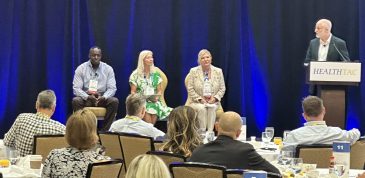
SAN DIEGO, CA — HEALTHTAC and Senior Living News were at it again recently, as the two sister companies hosted an intimate group of senior-living operators and suppliers at another boutique executive event. Five panel discussions gave operators many actionable ideas to bring back to their companies.
The third panel, which touched on dementia and an exciting new Medicare program designed to help keep patients in IL and AL longer, featured panelists Cognitive Care Management President/CEO Brian Browne; Allure and Wellness Management Services President Verna Chisman; and Sonya Paterno, who is VP of Sales and Marketing for Oakmont Management Group.
As the moderator of this panel, I began by asking Browne to give the room an overview of how aging has evolved in America over the years.
“Back in 1900, life expectancy was 45 years old,” Browne explained, “We have been able to extend life expectancy over the years through a number of wonderful things, like antibiotics and vaccinations. We’ve had this kind of duality in terms: longevity and aging we oftentimes use synonymously, but they’re different. As we’ve evolved in longevity, we’ve seen some changes along the continuum. In 1960, a number of things started to happen. One, our nation’s best actuaries, our best scientists, best physicians, all got together to prognosticate this whole aspect of the aging American, and to the best of their knowledge they came up with maximum longevity for the American was going to be — drumroll — 70 years old. So, in 1965, they created Medicare based on those recommendations from the early ’60s, believing that Americans would only avail of this entitlement program for five years because the maximum lifespan was 70 years old. Now we see longevity at an all-time high because science and technology were doing really well in keeping people alive. I said we oftentimes use the term aging in the same way we use longevity, but they’re two different constructs. Aging is a discernible rate and a way that we age, and when people hear the word aging, they typically think, ‘Oh my hair is turning gray, I got a middle-aged spread,’ or something like that; that’s not what I’m talking about. I’m talking about the cellular aspects of how we age. Specifically, in my field, brain aging and how we start to age en masse. We now know through science and research that we can control our rate of aging, but the key is to control it; otherwise, we end up doing what a lot of people do, which is accidental aging — meaning you mess around thinking you can live forever. Before you know it, you’re on your first job, you fall in love, and you get married. You turn around, you’re 30 years old, you stumble around, you’re 40, your kids are here and there, you wake up and you’re 50 years old, and all of a sudden you’re 60 and you’ve got aches and pains and things like chronic disease befall you, and you’re saying, ‘What is going on here?’ That’s accidental aging. Now the paradigm has shifted to intentional aging. People are living longer, but unless that’s combined with quality of life, we’re in trouble because people are living a poor quality of life. As a neuroscientist, we look at poor and abnormal aging in terms of cognitive aging and how it faces the continuum. Alzheimer’s disease is the sixth leading cause of death in the United States, and it is a neurodegenerative disease of aging. So, this is the aging continuum, the crux that we’re talking about right now. The question is whether we’re going to talk about how we get our arms around this aging continuum, and more people reducing their risk for chronic illness, chronic disease, Alzheimer’s and related dementias.”
Next, I turned to Verna to elaborate on the expectations of older adults.
“Many of you and your organizations and your communities are already offering some amazing endeavors,” Chisman acknowledged to the room, “and I applaud you for that. But the fact is, unfortunately, that is not enough for the sophisticated population that we have embarking upon us. The older adults now have been offered so much awareness on how to improve their health: nutrition, for example, the Blue Zones, supplements, and the importance of continuous exercise programs. Example: smartwatches keep you abreast of what you need to do in order to maintain your physical fitness. Also, having purposeful living is so important to our older adults. The mindset of our older adults has changed greatly; it is no longer the thought of retiring it is the thought of rewiring. How do we rewire ourselves to maintain healthy longevity and be the best that we can we? We want to be better with age not deteriorate in age. I think that’s what we have to actually provide for all of our residents. How do we reach those levels and keep that sustainability for them to have that healthy longevity?”
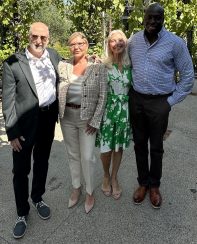 “And, also,” Paterno jumped in, “it’s a proactive versus reactive approach that people want to do. Five percent of the population with dementia is hereditary, 95 percent is environmental, and when we have families come in, we’re able to educate them that there are ways that they can actually prevent the disease. And those that do have the disease within our communities we’re able to assist in sustaining their baseline. It’s extremely exciting to me because we want to do the best and we work to do the best, but if we can actually prevent and if we can actually sustain our residents within our communities, we’ll be able to live longer, happier lives. It also goes to the fact that we know we have baby boomers coming in. I’m going to say 71 million, correct?”
“And, also,” Paterno jumped in, “it’s a proactive versus reactive approach that people want to do. Five percent of the population with dementia is hereditary, 95 percent is environmental, and when we have families come in, we’re able to educate them that there are ways that they can actually prevent the disease. And those that do have the disease within our communities we’re able to assist in sustaining their baseline. It’s extremely exciting to me because we want to do the best and we work to do the best, but if we can actually prevent and if we can actually sustain our residents within our communities, we’ll be able to live longer, happier lives. It also goes to the fact that we know we have baby boomers coming in. I’m going to say 71 million, correct?”
“Seventy-three,” Chisman interjected.
“Seventy-three?” responded Paterno. “I just skipped a few million people.”
“And to your point,” Chisman added, “there’s a formula that I use: ‘Self-care equals well-care.’ Well-care diminishes the need for healthcare. If you follow that, if you give your residents in your communities and your families and your staff the tools, the resources, the knowledge that they need to sustain and obtain that healthy longevity, it’s going to benefit this whole population, the whole country in the long run. It’s incumbent upon us to keep informed and to disseminate all the information that we learn, so that they can sustain and obtain that healthy longevity. I would even like to suggest that when you’re working with your budgets over the next few years consider placing a position within your staffing budgets to have a dedicated person for research for clinical studies, to review the abundance of publications that we get on a regular basis. There’s a lot of information in there, but who has the time to really go through that with a fine-tooth comb and disseminate that to all of the families and the residents and your staff? I think it’s an important part in order to keep up with the expectations of our upcoming population.”
“We are in a place where the number one feared disease for people over 60 is dementia, by and large,” Browne said next. “Nobody expects or plans for retirement with a dementia diagnosis; they may expect a little prostate cancer, maybe a little heart disease, or whatever, but nobody goes into retirement expecting a dementia retirement. So, it’s incumbent on leadership and it’s incumbent on all of us to understand these pain points. Right now, the number one most expensive disease for Medicare to care for is dementia. This is the pain point for the people that you’re taking care of — they don’t want to get dementia, but leadership is not in tune with that, so we have this vast disconnect of them entrusting thousands of dollars a month to live with you, but you’re not addressing their needs of quality of life. There needs to be a marrying of what they’re looking for — turning their lives over to you to be managed — and the fact that we’re doing our best to improve quality of life.
“Only five percent of Alzheimer’s is truly genetic,” Browne continued; “95 percent is what we call sporadic Alzheimer’s, which is a confluence of all of these risk factors percolating up until you become symptomatic. In research we found out Alzheimer’s disease starts 25 to 30 years before your first day of forgetfulness. It’s a progressive disease. This is where that confluence of risk factors comes into play. What I do every day in my clinic is manage those risks; we manage the stratified risk so that we reduce risk for those who are aging. We all have individual risks that we bring into the stratification, so what we do is personalized medicine — we look at you and we manage risk according to your risk profile, and the research and the data is crystal clear. For example, we know that we should eat well and exercise and do all those things, and as Verna alluded, we have these wearables that track steps and do all of these things, and if you’re getting too sedentary your watch buzzes and you have to move around. But what does ‘move around’ actually mean? We don’t know the big five that we should be obtaining: strength, flexibility, agility, balance, and endurance. That’s what we’re looking for to really confound this particular disease. So, create that as opposed to just ‘move your body’; it’s much more robust than some of the pedantic things that are out there, and this is where those things could be incorporated into regular everyday plans at communities. Sonya’s been a partner of mine at senior living where we’ve been able to do that and had tremendous results reducing risk for Alzheimer’s and related dementias. But it takes leadership. When someone commits their lives to you, family members turn over [their loved ones] to you guys to do your best, and you’re worried about the bottom line, worried about all sorts of other things, as opposed to the number one medical pain point for people who are entrusting their lives to you. And in all of those things we’re doing the wrong thing unless we’re leading in that direction.”
“We can have the best programs in the world,” said Paterno, “but it starts from the top. We can make an extreme change within our industry to keep our residents happier, healthier within our communities; if you take care of people, the bottom line will take care of itself, and our normal attrition will decrease. That’s what we’re talking about. In the end, we’re all about doing the best that we can do for our residents and our families.”
At this point I asked Sonya about the value of implementing proactive measures.
“To me, being proactive is implementing programs,” she replied, “being able to educate our teams on what those programs are, and not just setting something on a shelf in that sense. I have to tell you, I worked with Brian for a very long time, and with Verna, there’s been a lot of innovation that we’ve implemented at my company in the past and I love the fact that we have the wherewithal to do that and that we are empowered to. The fact that we can actually help someone to eliminate having it is absolutely amazing. It goes back to the education with our communities and our community teams; that comes from me, and it comes from my COO, and it comes from everybody at my organization buying in.”
“That is going to eliminate a great deal of healthcare costs,” Verna said. “It is going to bring back hope and joy to our families and to our residents, and that’s what we really want to achieve. We want to achieve the ability for them to stay healthy and independent as long as possible and beyond. Again, that’s going to impact your bottom line, but what we really need to address here is the right thing to do. What is the right thing to do in order to achieve all this? How can we get to these goals and inform all the population on the possibilities, and what is going to be on the horizon for the future of the older adult population? Brian’s going to, I think, somewhat illuminate us all on what those possibilities are.”
“Right now, we have to work upstream,” said Browne. “I and other individuals work upstream and manage risk, and you then have better quality of life. If you can keep people in IL and AL for longer, that’s the gold standard — it pays for itself — and so upstream works the best. Medicare has acknowledged the number one cost for them is in dementia and Alzheimer’s care so they have just initiated a program called the GUIDE program, which some of you may be familiar with. When people like myself can keep you in the gold standard of not having Alzheimer’s and related dementia, or delay the effects of it, that’s where they want you to be, but if you do tip over to the early Alzheimer’s, the Mild Cognitive Impairment level, Medicare has said, ‘We have a program now that we will case manage those people.’ It is private pay on the upstream side. We want people like you to invest in your people, to keep them healthy, but if they tip the scales Medicare has now stepped up with the GUIDE program that allows these folks to be case managed and still kept in your AL and IL. They don’t want them in memory care. They had an RFP (request for proposal) out to practitioners and health systems across the country late last year and they awarded contracts to certain clinics, health systems, to manage these people.
“My clinic was awarded one of those GUIDE contracts to be able to use Medicare dollars to manage populations that just tipped over to the Alzheimer’s side,” he explained. “Again, this program comes [into play] if they tip over to that side; it’s free of cost because Medicare Part B is covering that, so you folks could avail yourselves of that. One of the models that they allowed us to participate in was a virtual model, telemedicine, so we’re one of, I think, two across the country that is allowed telemedicine. So, we can be nowhere and everywhere at the same time and administer this program to any of your facilities at the cost of Medicare. It’s an exciting thing that Medicare has done to start to try and get their arms around this problem and reduce their burden on the back end. There’s a lot of residual benefit. There are more eyes on this particular disease because it’s the sixth-leading cause of death and you have an aging population. Right now, we have more schools and more momentum than we’ve ever had to keep people healthy, from making the tipping point, and if they do tip over we can get to them right away and longitudinally manage that disease at a much more holistic, healthier state than allowing people to just sit there and wait for the stench of dementia to overcome them and watch their families fall apart. We have the ability to do the right thing, and again this is about leadership. Unless you initiate this, this isn’t going to happen. We’re at a place right now that we can truly invest in this generation, the next generation, but it’s going to take leadership and proactive thinking to get there. We are making tremendous strides.”
At this point, Sodalis Senior Living President/CEO Traci Taylor-Roberts asked from the audience, “In addition to the things you guys are talking about, have you heard of anything on the medical front that could possibly solve for dementia or Alzheimer’s — not just treat it, but actually solve it?”
“We’re realizing Alzheimer’s is more of a syndrome,” Browne answered. “It is not a classic disease. There are many entry points in there, many risk factors that come into this syndrome. When we start to see the neurodegeneration and the 70 different types of dementia, this is where the syndrome comes in. Alzheimer’s is the most common form of dementia, so there’s a lot of work going into it. The real research is risk reduction, we’re not going to classically have the pill that solves this. With 70 differential diagnoses, with a number of entry points in terms of stratified risk, there’s a lot of work going into how we can manage those risk factors. It’s not as simple as finding a single solitary cure for this disease.”
“One comment that Brian made when we were speaking to one of our residents,” said Verna, “that pretty much just lays it on the line: ‘You do not hesitate to pay an enormous amount of money for anti-aging products for your skin and your hair — why aren’t you doing that for your brain?’ Being educated on all the possibilities for that prevention to keep your brain healthy is what’s going to diminish dementia.”
